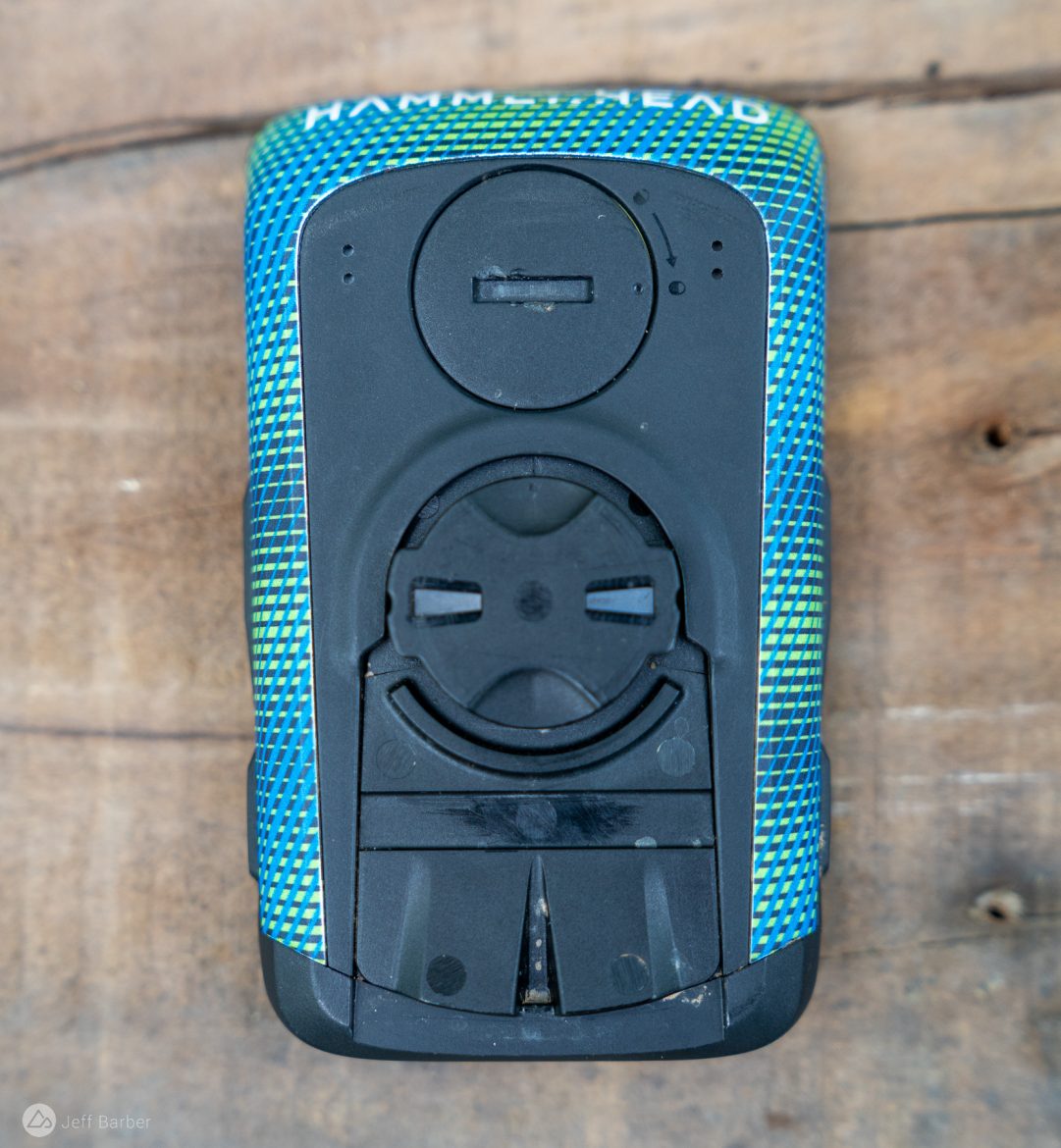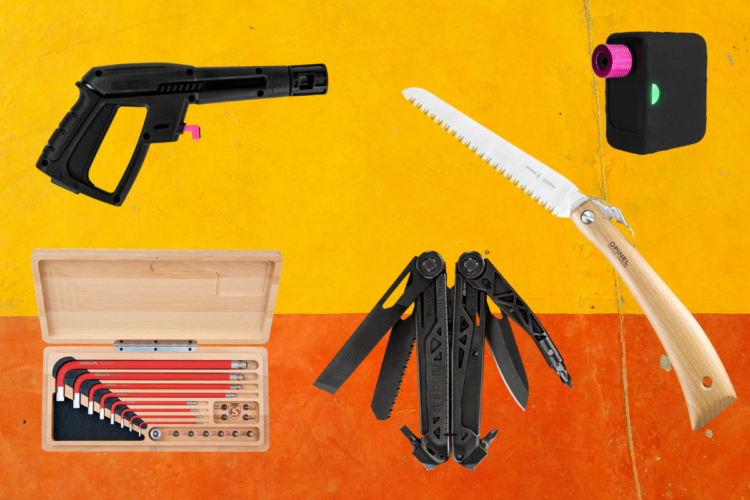
Editor’s note: Read the current generation Hammerhead Karoo review.
The Hammerhead Karoo 2 is a GPS unit from Hammerhead; it’s also an arid region located in South Africa. According to Wikipedia, “No exact definition of what constitutes the Karoo is available, so its extent is also not precisely defined.” Of course Wikipedia is talking about the desert, but those same words could just as easily apply to this Hammerhead GPS.
The Hammerhead Karoo 2 is sort of a smartphone mashed up with a GPS unit. It’s built on the Android operating system, and even has its own SIM card slot so you can get realtime data without carrying your actual smartphone along for the ride. Many GPS cycling units today include features that make them more smartphone-like; the Karoo 2 feels more like a smartphone that’s trying to act like a GPS, clear delineations be damned.
Not only is the Karoo 2 a unique mashup of two familiar products, its full list of features and capabilities can’t be precisely defined, at least not in the moment. Hammerhead prides itself on constantly pushing regular software updates with bug fixes, improvements, and new features. For many, this scenario may conjure a sense of dread. “I just want to ride now — can’t the software update itself later?!” Or worse, what if the latest software update bricks my GPS?
Fortunately I haven’t experienced either nightmare while testing the Hammerhead Karoo 2. Gentle software update reminders, both on the device and via email, are never forced, and Hammerhead even lets you know why it’s a good idea to update (features!). You know, just whenever you get a chance. Also because updates include bug fixes, it feels like the device is becoming more reliable over time, not less.

The Hammerhead Karoo 2 – Device
The Hammerhead Karoo 2 is fairly large for a GPS cycling unit. The 292ppi, 3.2″ screen is capable of displaying 16.7 million colors, which I imagine is pretty much all of them. Naturally, the device features a touch screen, and it’s one of the most responsive GPS touch screens I’ve tested. In some cases it’s a little too responsive; I found that drops of sweat and even rain can activate the screen accidentally. It’s plenty bright for readability in all conditions, and the anti-glare coating makes it easy to view from most angles.
Hammerhead claims about 12 hours of battery life with medium usage which isn’t category-leading by any means, but it at least covers a really long day in the saddle. The device charges via a USB-C connector which makes it easy to find a charger when you need one. There’s a slot for a memory card if you want to expand the offline maps the device can hold, and the Karoo 2 packs a barometer and thermometer for all your ‘metering needs. Of course, the device also supports all the wireless standards — WiFi, Bluetooth, ANT+, and GSM cellular — and positioning services like GPS, GLONASS, Beidou, and QZSS. There are four physical buttons on the Karoo 2, with two of them on each side.
As for the bike-mounting setup, Hammerhead seems to be really jazzed about their patent-pending system, and I have to say it’s really nice and secure. Instead of twist-and-lock like pretty much all the others, the Karoo 2 slides and snaps. Since I already have a drawer full of the twisty mounts, I made use of the included quarter-turn adapter. Yes, I am a sheep.

Smartphones are fragile, and fortunately the Karoo 2 is not. I dropped the device more times than I can recall, and the GPS hasn’t suffered as far as I can tell. There are no cracks or scratches; the only sign of wear-and-tear so far is part of the Hammerhead logo has worn off the body. The unit has proven to be quite water-resistant through multiple wet rides as well.
One final unique feature to note is the ability to swap in a custom body for the Karoo 2 to personalize it a bit. I tried the “Moiré Mode” kit (the blue-green pattern, pictured) and it was fairly easy to install. Still, I was a little worried I might damage something in the process, and while the kits add a bit of flair, it’s not all that noticeable, not to mention they are not cheap ($39 for solid colors, more for limited edit patterns).
All told, the Hammerhead Karoo 2 weighs 136.7g and is priced at $399 (available at Competitive Cyclist and other online retailers).



Hammerhead Karoo 2 – Set up
It’s easy to customize the Hammerhead Karoo 2 using the menus and screens on the device. Because the Karoo 2 basically is a smartphone (minus all the non-bike stuff), you don’t need a companion app to set everything up. The touchscreen is intuitive to use; there’s no need to remember which button is used to select, and which one goes back.
Connecting to WiFi enables automatic ride data syncing to third-party services like Strava and Kamoot. For those who don’t want to pony up for a dedicated SIM card and the resulting monthly data fees, it’s easy to connect the device to a smartphone via Bluetooth. This allows texts and other alerts to be displayed on the Karoo 2 as long as the smartphone is nearby.
On startup, the Karoo 2 allows you to select the type of ride or workout you’re starting. It’s possible to customize each workout type and even create new ones to focus on what matters most. I created a profile called “MTB” with basic stats for climbing, speed, distance, temperature, and time of day.
For such a powerful device, the Karoo 2 is actually very easy to set up out of the box. It’s also easy to tweak settings down the road to improve battery life, or just to customize the display. One setting the Karoo 2 is missing that I would love to see added is the ability to change the display font size. I wear reading glasses sometimes — though obviously not on the bike — and I’ve found things like alerts and trail names can be difficult to read on the Karoo 2 without cheaters. Thankfully, some parts of the data screens can be customized to focus on just a few key metrics at a time, which allows for larger number text sizes.
Hammerhead Karoo 2 – On the trail
There are two main things a GPS needs to do on the trail: assist with navigation and collect data.

Hammerhead Karoo 2- Navigation
With its detailed, colorful, and bright screen, the Karoo 2 is well suited to trail navigation. The free, included base maps use Open Street Map (OSM) data, and despite having the word “street” in the name, OSM generally has good trail coverage too. The squiggly trail lines on the map are helpful but are not as easy to navigate as a proper GPS data track. To get a proper trail map that can be followed, users need to either upload a GPX file via the Hammerhead website or pull the map in from a connected third-party service like Strava.
Once a route is loaded, the Karoo 2 does an excellent job keeping the rider on track. I tend to get creative during my rides, branching off onto a side trail here, or looking for a shortcut there, which tends to confuse GPS units. The built-in reroute feature works quickly and tirelessly to find a way back on course using its massive bank of offline map data that you (hopefully) loaded before heading out for the first time. There’s even a 3D map view which is pretty helpful for navigating populated areas surrounded by buildings and such, though it’s not really relevant for most trail rides.
Scrolling between data screens can be done with a swipe, or by using buttons on the side of the unit. Pinching and zooming is easy and familiar, and it generally works with gloved hands. Hammerhead helpfully places on-screen action buttons next to the corresponding physical button on the device in case you forget what button does what, or if one method happens to be easier than the other.
Hammerhead Karoo 2 – Data collection
If you’ve read any Singletracks GPS coverage over the years, you likely know what’s coming next: the accuracy test. Yes, I took the Hammerhead Karoo 2 out to the track, along with a few other devices, to see how well it measures a known distance. Averaged over two, one-mile tests, I found the Karoo 2 undercounted distance by just 0.9%, which places it among the most accurate devices we’ve ever tested. Despite its built-in barometric altimeter, it didn’t do quite as well at tracking elevation; the device reported 7ft. of elevation range for the flat track in the first test and 12ft. for the second. To be fair, very few GPS units are able to get much closer to zero, and for real trails with non-trivial elevation gains and losses, it seems to be plenty accurate.

This time I also added a bit of a real-world test for all the track-test skeptics out there. One of my local trails, shown above, is notoriously twisty and compact. A couple of years ago I measured the trail to be almost exactly two miles long using a calibrated, wheel-based sensor. Most GPS units think the trail is barely more than a mile long. The Hammerhead Karoo 2 estimated the trail to be 1.6 miles long (roughly 80% accuracy), which is the best of any I’ve tested. The next closest was 70%, and most GPS units hover in the 50% range.
The Karoo 2 has an auto-pause feature that stops recording whenever the rider stops moving. On particularly technical trails where my speed drops to near-zero, the Karoo 2 tends to keep tracking until I come to a legit, complete stop. Other GPS units don’t seem to be nearly as sensitive to low speed — or to my feelings. “Shut up Wahoo, I haven’t stopped! I’m still moving, just very slowly, OK?!”
Conclusion
The Hammerhead Karoo 2 is a rugged, yet fully-featured GPS unit that works well for mountain biking. Like the Karoo desert itself, its current and potential future feature sets are vast, and in many ways unknowable. Exploration is a big part of the fun!
- Price: $399
- Available at Competitive Cyclist and other online retailers.
Party laps
- High quality touch screen
- Detailed maps and map data
- Easy to set up and customize
Pros and cons of the Hammerhead Karoo 2 GPS.
Dirt naps
- Touch screen gets confused by sweat
- No ability to adjust font size for trail names, alerts
- So-so battery life




















0 Comments